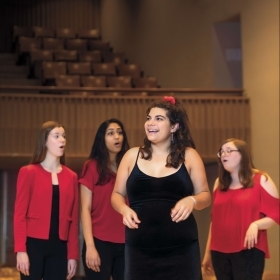As College treasurer and vice president for finance and administration, Piper Orton oversees Wellesley’s budget and financial operations. She sat down with the magazine to answer a series of questions about College finances. First up: How much does a Wellesley education actually cost, and what does that mean for the long term?
In fiscal year 2019 (the 2018–19 academic year), the total cost to educate each Wellesley student was $98,530, Orton says. This includes faculty salaries—Wellesley has a low faculty-student ratio, allowing for small classes—but also everything affiliated with the four-year residential experience. That’s the buildings themselves, energy costs, dining services, res hall staff, deans, athletics, and so much more. This cost is comparable to most schools in Wellesley’s cohort—elite liberal arts colleges.
The comprehensive fee—tuition fees, room, and board—was $70,200 in FY19. “Every student at Wellesley, even those whose families are paying the full comprehensive fee,” Orton says, “is actually receiving a discount from the cost of the education of almost $30,000.”
Caption tbd click here to enlarge graphic
Sixty percent of Wellesley students receive financial aid. Therefore, in FY19, the net tuition, room, and board revenue per student was $41,859. The result is a gap of nearly $57,000 per student.
“Our challenge each year, year after year,” says Orton, “is how [to] fund the gap between the cost of the education per student and the net revenue per student [tuition, room, and board].” The main gap-stopper is income from the endowment. Wellesley also applies current-use donations to the gap, as well as other small sources of funding.
“We have only been able to do this,” Orton adds, “because of … generations of alumnae who have given funds to the College to hold in perpetuity to enable others who come after them to afford a Wellesley College education. … [But] the fact is that our growth in financial aid has far exceeded the growth in endowment for financial aid. … We need to keep building the endowment in order to ensure that we can continue to support people for generations to come.”
In the next issue: The College’s endowment









We ask that those who engage in Wellesley magazine's online community act with honesty, integrity, and respect. (Remember the honor code, alums?) We reserve the right to remove comments by impersonators or comments that are not civil and relevant to the subject at hand. By posting here, you are permitting Wellesley magazine to edit and republish your comment in all media. Please remember that all posts are public.